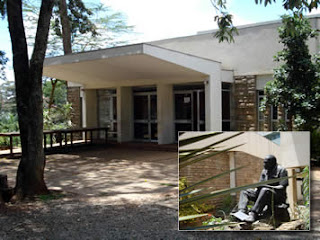We received this blog from Joe Were, an accomplished keyboard player, composer, music director and all round great guy; about his experience at the Youtube.ke launch at the Tribe hotel. Our aim by putting this up is to keep sound reinforcement companies accountable and bring much needed professionalism to the field
Read. Enjoy. Share
"So this is my first ever blog post and unfortunately I have
been driven to write this due to nightmarish circumstances that every
artiste/musician dreads in the hands of a “professional” service provider.
First of all, a little background on myself. I am a keyboardist
and have played for various artists as well as Provided backline equipment
(That would be Instruments, mics, cabling e.t.c) and also onsight Audio
recording solutions. So I tend to believe I have a little know how and
experience on the stage and how to solve problems as they arise.
Now that that’s out of the way…here we go.
Enter Wednesday 5th October, and I was playing
with Just-A-Band, a popular Electronic Music band that just concluded a recent
tour of New York, even getting rave reviews from the likes of Will-I-Am and
Drum Magazine. So after the New York experience, this would be the first “back
home” gig at the famous Tribe Hotel. The sound Provider for the event…Home BoyzEntertainment.
We get the call to soundcheck at 5pm on Tuesday the 4th…and
we arrive 30 mins before…just to make sure everything was where it was supposed
to be…plus I was carrying my pretty bulky Yamaha S90XS keyboard (just because I
prefer using my own settings and am familiar with the sounds). When we get
there…there is no evidence of any instrument setup going on…6pm…ummm,
nope…7pm…still waiting…8pm…oh cool…a guitar amp has been put near the
stage….9pm…no…just the guitar amp…so we decide to leave around 9:30pm and
reschedule the soundcheck for the next day.
Wednesday, 5th October D-Day. We arrive somewhat
late (a half hour late) for our
scheduled soundcheck time of 4pm due to traffic. So we would imagine since we
had an hour at least of slotted soundcheck time. We get there and the
Instruments are on stage but no cabling has been done…so we
wait…5pm…no…6pm…ummm, no. 7pm, I got impatient and decided I’m going to setup
my keyboard myself.
About 8 Home Boyz guys in “Crew” T-shirts walk around with
walkie talkies looking busy but if you really follow one of them, he’s literally
just walking around. So I ask one of them to point me to the person in charge
of setting up the instruments as we were supposed to sound check about 3 hours
ago. He points me to one of them and I go to him and ask him where I should set
up and which channel I should use and what not.
Bear in mind, on this night we had pretty minimal equipment
by Just-A-Band standards…we just had to hook up the keyboard and a laptop which
was hooked up to a loopmaster. We basically needed only THREE channels (Stereo output
from the laptop and a mono feed from the Keyboard)
The main engineer asks me if I have a jack to jack cable.
WAIT A MINUTE…even I, who doesn’t do this on a day to day basis, do not leave
home without a jack to jack cable. If it’s not in the boot of my car, it’s in
my shoulder bag if I’m not driving….It’s the sim card in your phone, it’s the water
in your rice…it’s the hour hand of cables as far as instruments go…Home Boyz
Entertainment did not have Jack to Jack cables.
I of course at this point was tired of waiting for them to
sort the setup out so I obliged and went for the jack to jack cable…I get back
and he asks if I had a D.I… at this time…jumping into the nearby pool with my
clothes on seemed like a very welcome idea because my blood is boiling…
So I asked him if they received the tech rider that was sent
to them earlier the previous week…he said he didn’t know…I asked him who would
know…he didn’t know…I walk off to get my D.Is from the car…
So they hook up the laptop and they don’t have any feed on
the main mixer… after fiddling with buttons and knobs they ask me if I have
headphones! HEADPHONES!!!!! Mr, sir on the mixer…how were you going to monitor
your mix in the first place? No problem…another trip to the parking lot to get
my headphones from the car. At this rate, I’m so fit from the trips on the
stairs at the Tribe, I think I might enroll for the next marathon.
It’s now about 10pm…no soundcheck…and we’re about to be
called on stage…(well, we’re already on stage trying to sort the sound) so we
decide since there’s no way we’ll use the laptop…we’ll play it full LIVE.
Perfect…this is what I do baybie…let’s go. I, the client, am telling HomeBoyz,
the service provider how to turn on Phantom power so that the keyboard feed can
be received on their mixer…after fiddling with buttons they eventually find the right one…which I had
showed earlier anyway.
So we kick off our performance with pretty poor sound
quality with just the keyboard, drums and bass guitar!
Right after the first verse…the keyboard is
MUTED….apparently they have no idea the keyboard cannot be heard…as I’m
signaling the sound engineer and he looks right at me with a blank stare. The
drummer and bassist do a pretty good job covering for the rest of the song…and
as the song is about to end…the sound engineer comes onto the stage to ask if
we’re OK…and I ask him what he thinks…and he goes like, “Oh, the keyboard is
off?”
And that is why, ladies and gentlemen, HomeBoyz
Entertainment should stick to doing what they do best..DJing."
*inhales deeply"
Watu Wako © 2011























